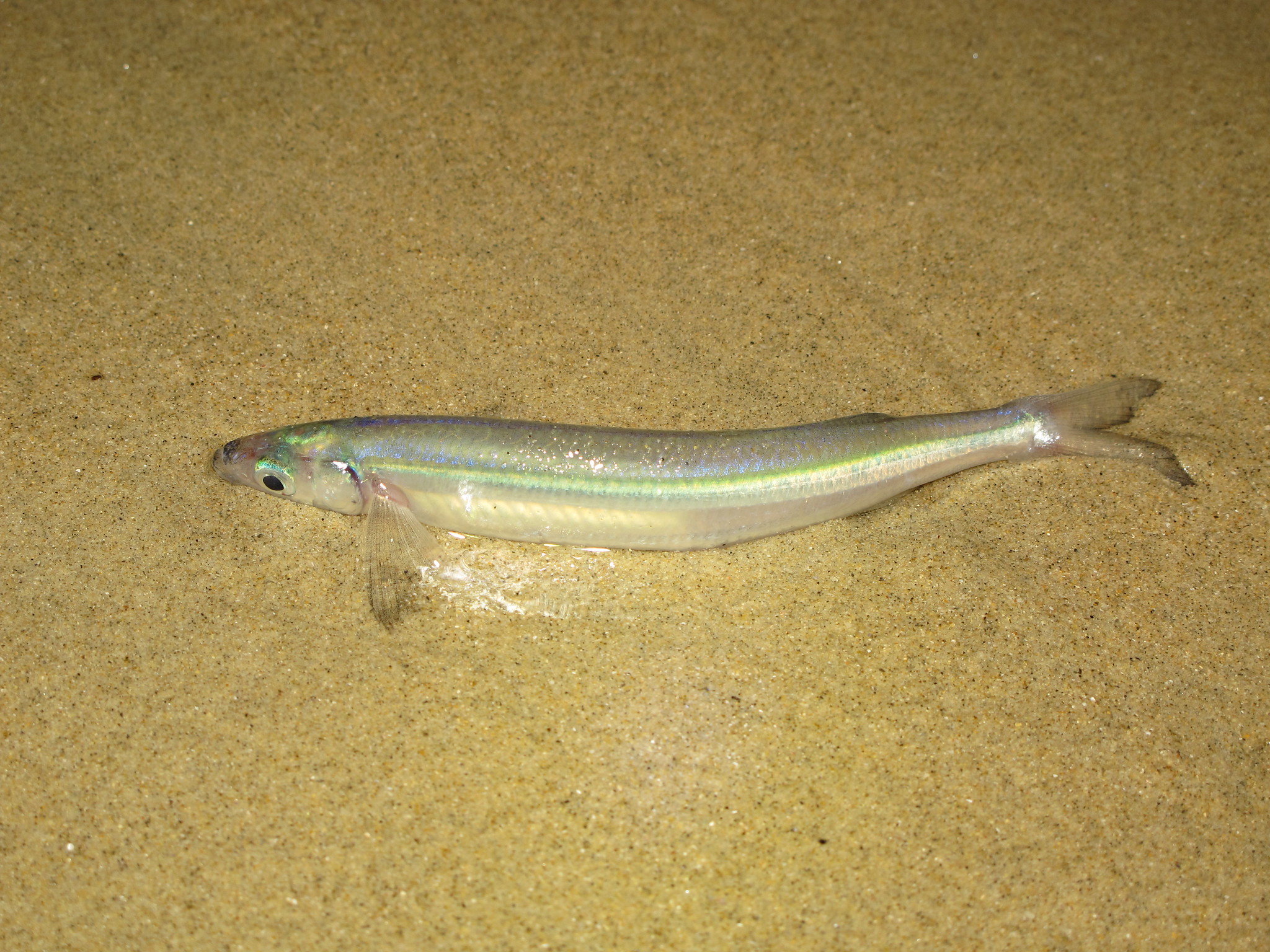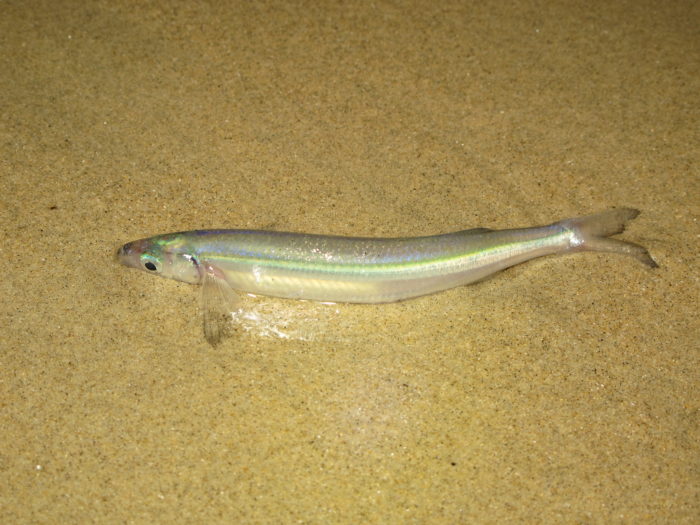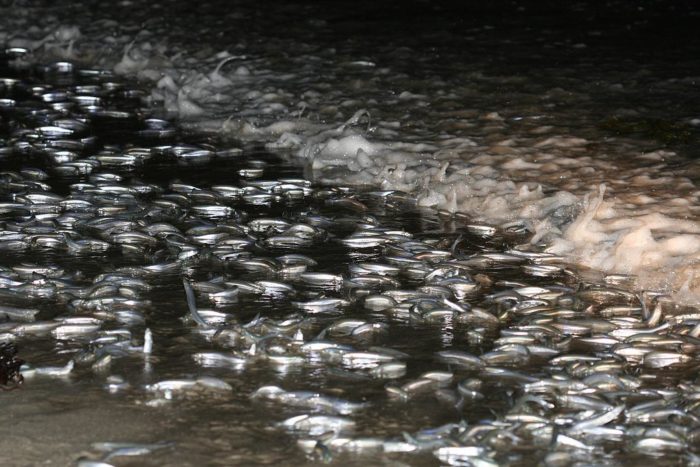
Sea Wonder: California Grunion

Photo credit: Z Phase
Grunion are two species of marine fish in the genus Leuresthes. These fish were named grunion, or “grunter,” by early Spanish settlers, presumably because of the subtle squeaking sounds emitted by these fish during mating. One species of grunion, the California grunion (Leuresthes tenuis), is best known for its unusual and fascinating reproductive behavior.
Description
The California grunion is a species of bony fish found only along the coast of California. These small fish, which reach lengths of five to six inches on average, belong to the family Atherinidae. This group of fishes is nicknamed “silversides” for the distinct silver markings that decorate them; the shiny, silvery stripes found along the blue-green backs of California grunion distinguish them as members of the Atherinidae family.
Grunion have played an important role in Native American culture for hundreds of years. As a historically vital food source, these fish drew members of California tribes such as the Kumeyaay to gather in groups along the shore to fish.
Diet and Habitat
Small California grunion feed on even smaller prey, with a diet consisting of tiny crustaceans and other zooplankton. Grunion are uniquely adapted to hunting these minute prey items. Unlike large-bodied filter feeders like basking sharks and blue whales who feed blindly and rely on large volumes of water to obtain prey, grunion use their large eyes and powerful eyesight to attack individual prey.
The habitat of the California grunion ranges from Point Conception, California to Punta Abreojos, Baja California. These fish are known to dwell in shallow waters, mostly remaining close to the surface. In the National Marine Sanctuary System, California grunion are most abundant in or around Channel Islands National Marine Sanctuary.
Life History
California grunion are most famous for their unique reproductive behavior – these fish spawn entirely out of water and lay their eggs on the sandy beaches of California. Grunion mating takes place between March and August for a few nights following the full moon. Under favorable conditions at high tide, the fish swarm to the beaches to breed. Female grunion dig small holes and deposit their eggs in the sand while males fight each other to fertilize the eggs. Once fertilization is complete, the females bury the eggs. Some females can spawn up to six times and produce a whopping 18,000 eggs in a single season! After spending several minutes on shore to mate, females return to the sea. Their fertilized eggs remain buried in the sand for at least ten days until the next high tide triggers the baby grunion to hatch. It takes one year for these hatchlings to mature and complete the spawning cycle. Grunion have a lifespan of three to four years.
While spawning, California grunion are vulnerable to threats and are often eaten by seabirds, crabs, and other species. Humans are also attracted to the spectacle of grunion mating; each year, California’s “grunion runs” attract many participants hoping to witness this fascinating process and try their luck at catching grunion by hand.
Threats and Conservation
As an important prey species, the grunion is a valuable part of California’s coastal ecosystems. The grunion is a dietary component of many predators, including halibut, croakers, and seabirds. Grunion eggs also play an essential role in the food chain and are often consumed by probing sand worms, beetles, and beach hoppers.
The California grunion’s conservation status is unknown. However, beach development and overharvesting have negatively impacted some spawning areas. Therefore, restrictions exist to limit hunting by humans participating in grunion runs. A fishing license is required, and only collection with bare hands is allowed. Additionally, grunion taking is not permitted during the months of April and May.

A Grunion run spawning on the shore. Photo credit: Spline9.
